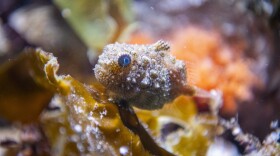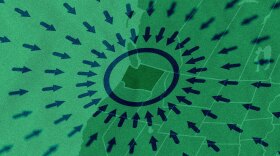Seattle researchers have taken a key step toward beating back the world’s leading cause of death by regrowing damaged heart tissue in monkeys.
Scientists had long thought getting heart tissue to regenerate was impossible. But stem cell research began to raise hopes in the 1990s, and over the years, researchers like Chuck Murry of University of Washington Medicine’s cardiology division started to get some traction.
First came successes with rats, then with guinea pigs. Now Murry’s team has managed to repair heart tissue in an animal more closely related to humans: monkeys called pigtail macaques.
“When I first saw our cells beating in the macaque heart it sent shivers up my spine,” said Murry. “And it was one of those sort of 'aha' moments when I thought, 'We can do this in people.'”
Murry’s team had induced a kind of artificial heart attack in the monkeys, then injected them with cells derived from human embryonic stem cells. The monkeys’ hearts integrated the human cells, infused them with new blood vessels and set their new rhythm.
Murry says the big dream is to build on this advance and attack the number one worldwide killer of people: ischemic heart disease and the heart failure that goes with it.
“What we think we can do is change what’s otherwise fated to be a chronic disease, and potentially cure it,” he said.
Big challenges remain, such as solving the troubling irregular heartbeat some of the monkeys experienced after the transplant. It’s also not clear how much the procedure improves the heart’s ability to pump blood. Murry says he hopes human trials could begin within about four years.









